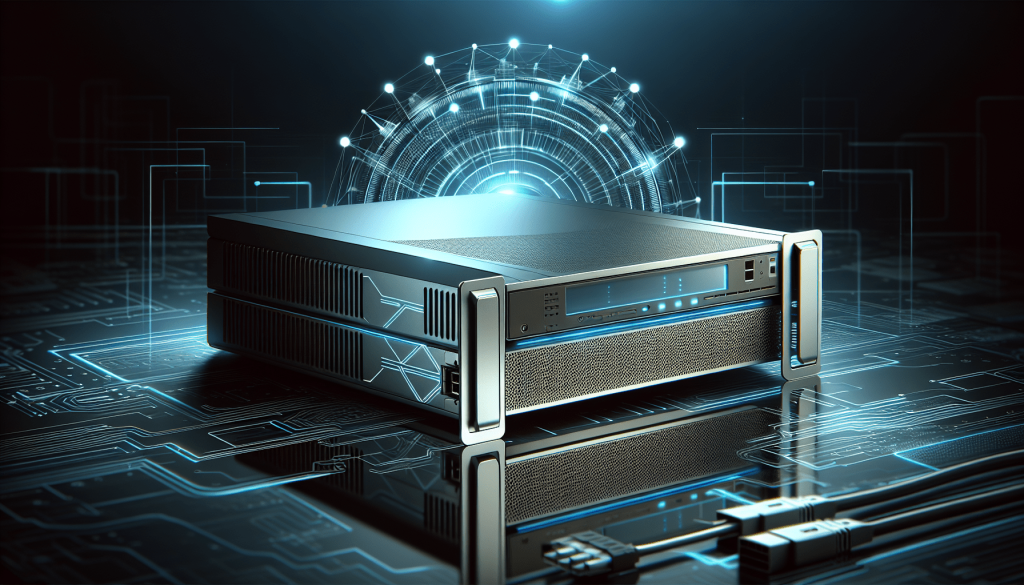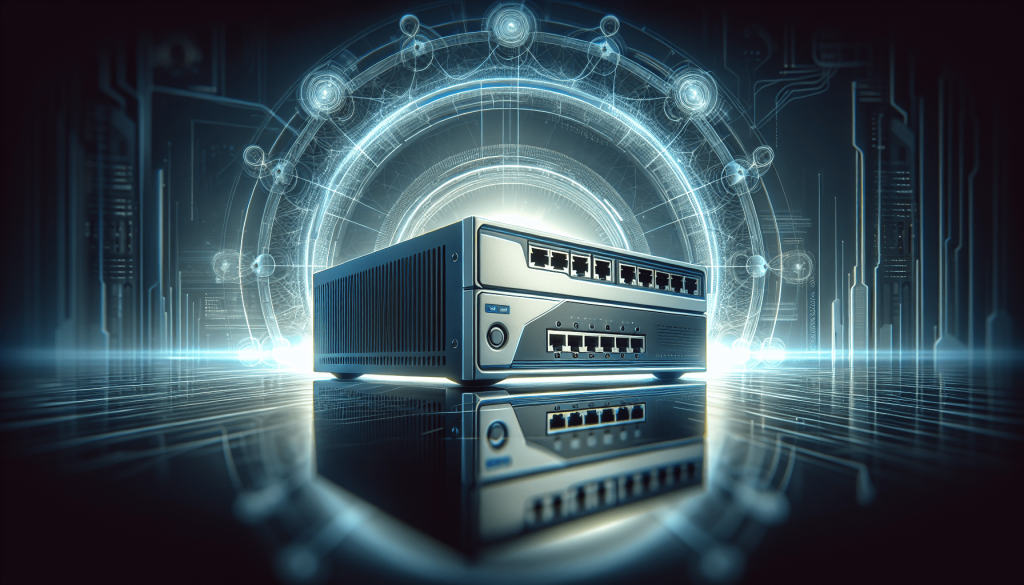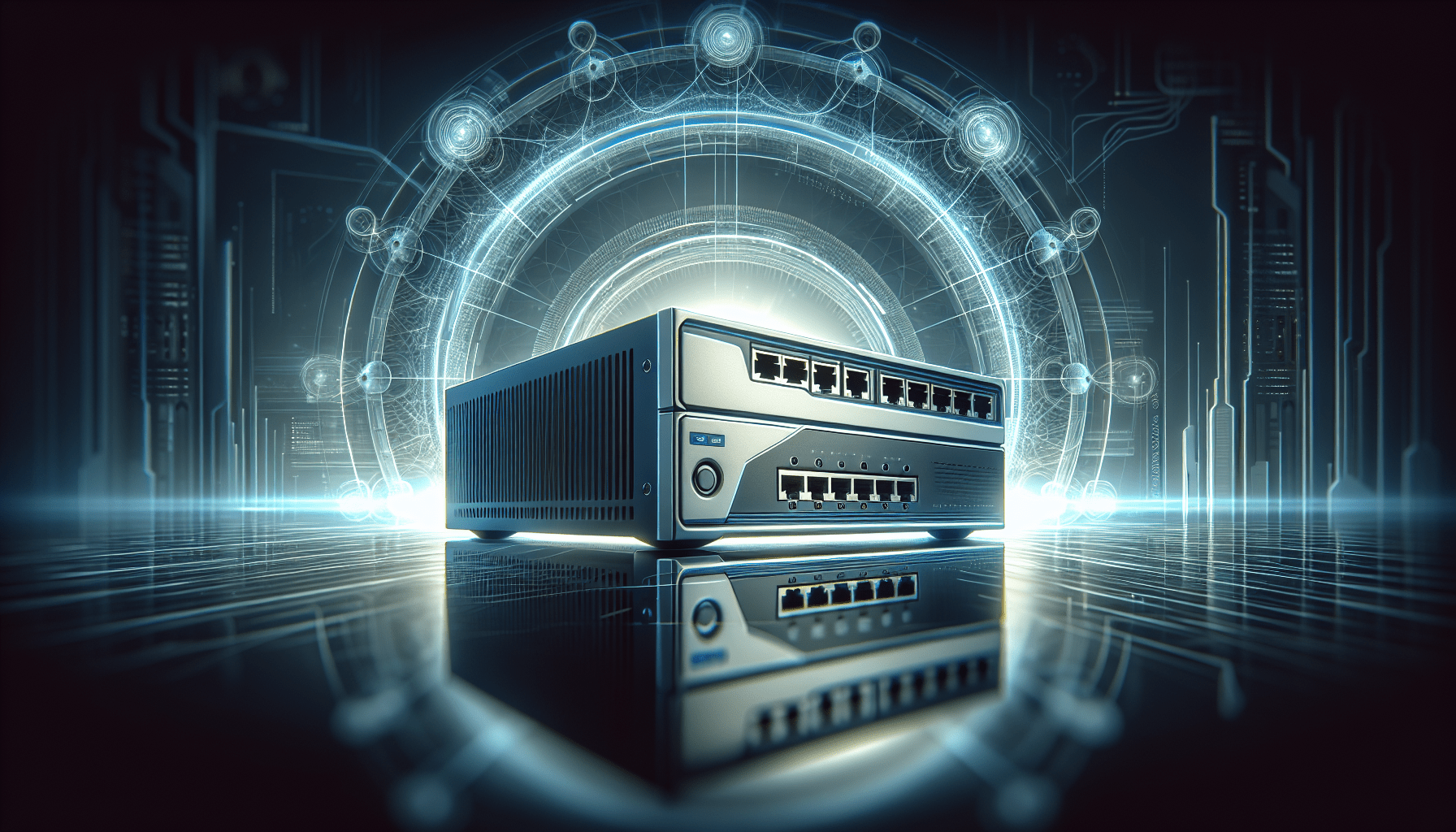So, you’ve heard about hardware firewalls, but you’re not quite sure what they are or how they work? Well, look no further, because this comprehensive guide is here to answer all your burning questions. Whether you’re an IT professional or just someone interested in learning more about network security, we’ll take you through the ins and outs of hardware firewalls, explaining their various types and how they can protect your valuable data. By the end of this guide, you’ll have a solid understanding of these essential devices and why they are crucial for safeguarding your network from external threats. Get ready to level up your security knowledge and gain peace of mind.
Types of Hardware Firewalls
Packet Filtering Firewalls
Packet Filtering Firewalls are the most basic type of hardware firewall. They work by examining each packet of data that passes through the network and filter them based on predetermined rules. These rules can include allowing or blocking traffic based on the source or destination IP address, protocol type, or port number. Packet Filtering Firewalls are efficient and have low processing overhead, but they lack the ability to inspect the contents of the packets.
Circuit-Level Gateways
Circuit-Level Gateways operate at the session layer of the OSI model. They create a connection between the internal and external networks, acting as a intermediary for all traffic. These firewalls monitor and control the sessions and ensure that all connections are legitimate before allowing data to pass through. Circuit-Level Gateways are effective in preventing unauthorized access, but they do not inspect the contents of the packets.
Application-Level Gateways
Application-Level Gateways, also known as Proxy Firewalls, are capable of examining the contents of each packet. They act as a proxy between the internal network and the internet, allowing or denying packets based on the application layer protocols being used. This type of firewall provides a higher level of security as it can detect and block specific applications or protocols that may pose a threat. However, Application-Level Gateways can introduce latency due to the extra processing required.
Stateful Multilayer Inspection Firewalls
Stateful Multilayer Inspection Firewalls combine the capabilities of packet filtering firewalls and application-level gateways. They not only filter packets based on predetermined rules but also keep track of the state of network connections. By maintaining a state table, these firewalls can make more informed decisions about allowing or denying packets. This enhances security as the firewall can differentiate between legitimate and malicious traffic. Stateful Multilayer Inspection Firewalls provide a good balance between security and performance.
Next-Generation Firewalls
Next-Generation Firewalls (NGFWs) are the most advanced type of hardware firewalls available today. They incorporate deep packet inspection along with other advanced security features such as intrusion prevention systems (IPS) and antivirus capabilities. NGFWs can identify and control applications and users, allowing for more granular control over network traffic. They provide enhanced security by inspecting the content of packets and can even block malicious content in real-time. However, the extensive capabilities of NGFWs can also introduce complexities and require more resources for administration and maintenance.
Benefits of Hardware Firewalls
Enhanced Security
One of the primary benefits of hardware firewalls is the enhanced security they provide. By filtering and inspecting incoming and outgoing traffic, hardware firewalls can block potential threats and prevent unauthorized access to your network. The various types of hardware firewalls offer different levels of security, with Application-Level Gateways and Next-Generation Firewalls offering the highest level of protection by inspecting packet contents for potential threats.
Faster Processing Speed
Hardware firewalls are designed to handle the high volumes of network traffic efficiently. Unlike software firewalls that can consume significant system resources, hardware firewalls have specialized hardware components that can process network packets quickly, minimizing any impact on network performance. This ensures that your network operates at optimal speed and efficiency, even under heavy loads.
Centralized Control
Hardware firewalls offer centralized control over the network traffic, allowing you to manage and enforce security policies from a single device. With the ability to set rules and policies for incoming and outgoing traffic, you can ensure that your network is protected and that only authorized traffic is allowed. This centralized control simplifies network management and reduces the risk of misconfigurations or inconsistencies across multiple devices.
Simplified Network Management
By implementing a hardware firewall, you can simplify network management. Hardware firewalls provide a consolidated solution for network security, eliminating the need for separate devices or software applications. This streamlines the management process, reduces the number of potential points of failure, and makes it easier to monitor and enforce security policies across the network.

How Hardware Firewalls Work
Packet Filtering
Packet Filtering firewalls examine each packet of data as it passes through the network and decide whether to allow or block it based on predetermined rules. These rules can include criteria such as the source and destination IP addresses, protocol type (TCP/UDP), and port numbers. If a packet matches a rule, it is allowed to pass through, otherwise, it is discarded. Packet Filtering firewalls work at the network layer (Layer 3) of the OSI model and are efficient in terms of processing speed but lack the ability to inspect packet contents.
Stateful Inspection
Stateful Inspection firewalls combine the capabilities of Packet Filtering firewalls with the ability to maintain a state table. This state table keeps track of the state of network connections, allowing the firewall to make more informed decisions about allowing or denying packets. It can differentiate between legitimate connections and malicious attempts, enhancing security. Stateful Inspection firewalls work at the network and transport layers (Layer 3 and 4) of the OSI model and provide a good balance between security and performance.
Application Inspection
Application Inspection firewalls, also known as Proxy Firewalls, operate at the application layer (Layer 7) of the OSI model. They act as intermediaries between the internal network and the internet, examining the contents of packets. These firewalls can identify and control specific applications or protocols being used and block any potential threats. Application Inspection firewalls provide a high level of security but can introduce latency due to the additional processing required.
Deep Packet Inspection
Next-Generation Firewalls (NGFWs) utilize Deep Packet Inspection (DPI) to examine the contents of packets in detail. This advanced technique allows NGFWs to identify and block specific applications, users, or even specific content within packets. By analyzing the data within the packets, NGFWs can detect and block potential threats in real-time. DPI is resource-intensive and requires significant processing power, so NGFWs are often equipped with specialized hardware components to handle the workload.
Choosing the Right Hardware Firewall
Assessing Security Needs
When choosing a hardware firewall, it is important to assess your security needs. Consider the sensitivity of the data being transmitted, the potential threats your network may face, and any compliance requirements that need to be met. This will help determine the level of security features and capabilities your hardware firewall should have.
Reviewing Features and Specifications
Review the features and specifications of different hardware firewalls to ensure they meet your specific requirements. Consider factors such as the number of LAN ports, VPN support, traffic reporting and analysis capabilities, and intrusion detection and prevention systems. Look for firewalls that offer a good balance of security, performance, and scalability.
Scalability and Performance
Consider the scalability and performance of the hardware firewall. If your network is expected to grow or handle high volumes of traffic, ensure that the firewall can accommodate the increased demand. Look for firewalls that can handle the desired throughput and provide enough processing power to maintain optimal performance.
Integration with Existing Infrastructure
Evaluate how well the hardware firewall integrates with your existing network infrastructure. Consider factors such as compatibility with your network devices, the ease of integration, and the level of support provided by the manufacturer. Compatibility issues can result in configuration problems and reduce the effectiveness of the firewall.

Setting Up a Hardware Firewall
Identify Network Requirements
Before setting up a hardware firewall, it is important to identify your network requirements. Determine the number of devices that need to be protected, the desired security policies, and any specific network configurations. This will help in designing the firewall rules and policies that best meet your network’s needs.
Configuring Firewall Rules
Once the network requirements are identified, configure the firewall rules based on those requirements. Firewall rules define the conditions under which traffic is allowed or blocked. Specify source and destination IP addresses, protocols, and port numbers for incoming and outgoing traffic to ensure that only authorized traffic is permitted. Regularly review and update the firewall rules to adapt to changing network conditions and security threats.
Testing and Monitoring
After configuring the firewall, thoroughly test it to ensure that it is working as expected. Test network connectivity, verify that the firewall rules are correctly enforced, and check for any vulnerabilities. Monitor the firewall logs for any unusual activity or potential security breaches. Regularly review the logs and analyze network traffic patterns to identify any potential threats or areas for improvement.
Regular Firewall Updates and Maintenance
To keep the hardware firewall effective, it is important to regularly update the firewall software and firmware. These updates often include patches to address any discovered vulnerabilities or performance improvements. Implement a regular maintenance schedule to ensure that the firewall is operating at optimal performance and to proactively address any potential security issues.
Common Features of Hardware Firewalls
Multiple LAN Ports
Most hardware firewalls come with multiple LAN ports, allowing you to connect and protect multiple devices within your network. This feature enables you to segment your network, separating different departments or user groups, and applying specific security policies to each segment.
VPN Support
Virtual Private Network (VPN) support is another common feature of hardware firewalls. By setting up a VPN connection, you can securely connect remote locations or allow remote users to access your network. VPN support in a hardware firewall ensures that data transmitted over the internet is encrypted, providing an additional layer of security.
Traffic Reporting and Analysis
Hardware firewalls often provide traffic reporting and analysis capabilities. These features allow you to monitor network traffic, identify any abnormal patterns or potential security breaches, and generate reports on network usage. Traffic reporting and analysis help in making informed decisions about network optimizations and enhancing security measures.
Intrusion Detection and Prevention Systems
Some hardware firewalls have built-in Intrusion Detection and Prevention Systems (IDPS). IDPS continuously monitor network traffic, looking for any signs of potential attacks or malicious activity. When suspicious activity is detected, an IDPS can either block the traffic or generate alerts for further investigation. This feature provides an additional layer of security against known and emerging threats.
Hardware Firewall vs Software Firewall
Performance and Processing Speed
Hardware firewalls generally outperform software firewalls in terms of processing speed and performance. Hardware firewalls utilize specialized hardware components dedicated to handling network traffic, allowing for faster packet processing. Software firewalls, on the other hand, rely on the resources of the host computer, which can slow down the network performance.
Management and Control
Hardware firewalls offer centralized management and control, making them easier to deploy and administer in large-scale networks. They provide a single point of control for managing security policies, monitoring network traffic, and updating firmware. Software firewalls may require individual installations on each host computer, resulting in more time and effort required for management and control.
Security Levels
Both hardware and software firewalls offer security, but hardware firewalls generally provide a higher level of protection. Hardware firewalls can filter and inspect traffic at a deeper level, blocking specific applications, protocols, or content within packets. Software firewalls, while still effective, are more susceptible to attacks and can be disabled or bypassed if the host computer is compromised.
Limitations of Hardware Firewalls
Cost
Hardware firewalls can be expensive to purchase and maintain, especially when compared to software firewalls. The initial cost of acquiring the hardware, along with the ongoing expenses for software updates and maintenance, may not be feasible for small businesses or individuals with limited budgets.
Complexity of Configuration
Setting up and configuring a hardware firewall can be complex, especially for individuals without prior experience or knowledge of network security. It requires a good understanding of network protocols, firewall concepts, and security best practices. The complexity of configuration can lead to misconfigurations, leaving the network vulnerable to attacks or inappropriate access.
Incompatibility with Certain Applications
Some hardware firewalls may be incompatible with certain applications or network configurations. Certain protocols or services may require additional configuration or may not work at all with certain firewall brands or models. This can pose challenges when trying to implement specific applications or services within the network.
Common Mistakes to Avoid
Neglecting Regular Updates
Regularly updating the hardware firewall’s software and firmware is crucial for optimal performance and security. Neglecting these updates can leave the network vulnerable to known exploits and vulnerabilities. Make it a priority to stay updated with the latest patches and updates provided by the manufacturer.
Using Weak Passwords
Using weak or easily guessable passwords for the hardware firewall’s administrative interface can lead to unauthorized access to the network and compromise security. Ensure that strong and unique passwords are used, and consider enforcing two-factor authentication for an added layer of security.
Not Monitoring Firewall Logs
Firewall logs provide valuable information about network activity and potential security breaches. Failing to monitor these logs can result in missed opportunities to detect and respond to security incidents. Regularly review and analyze the firewall logs to identify any suspicious or unusual activity.
Conclusion
Hardware firewalls are essential components of network security, providing enhanced protection against potential threats and unauthorized access. By understanding the different types of hardware firewalls, their benefits, and how they work, you can make informed decisions when choosing, setting up, and managing a hardware firewall for your network. Consider your specific security needs, review the features and specifications of different hardware firewalls, and carefully assess scalability and performance requirements. Avoid common mistakes and regularly update, configure, and monitor your hardware firewall to ensure optimal security and protection for your network.
